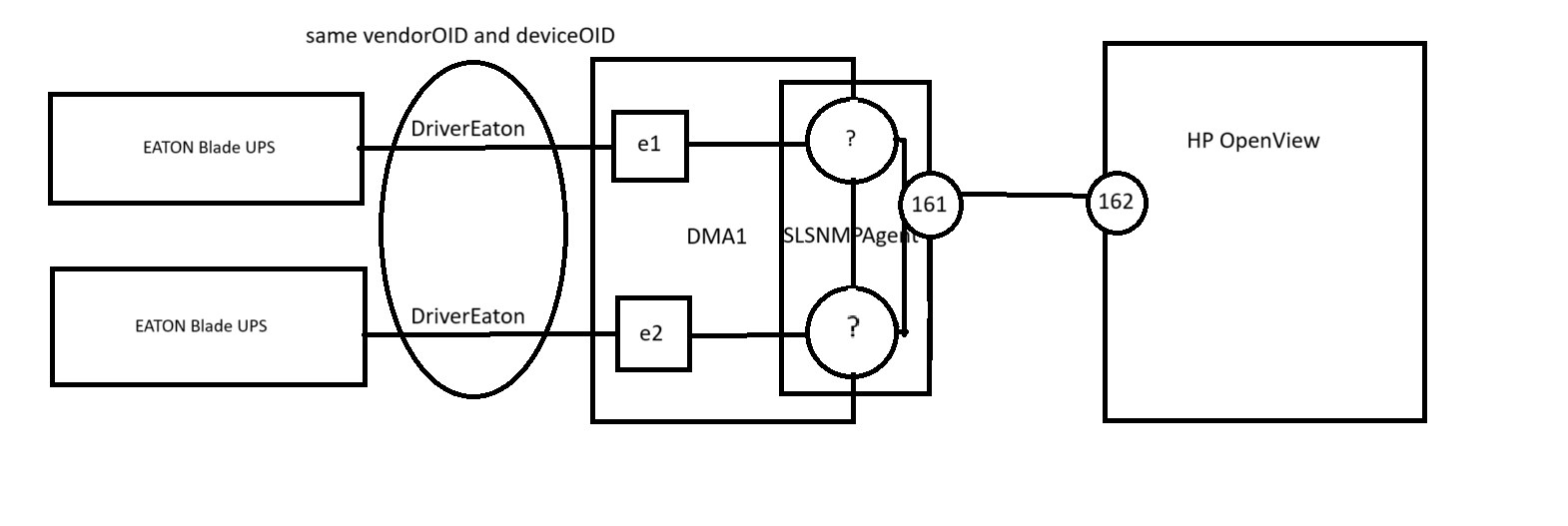Hi Dojo,
I'm interested in how the OID is constructed when third-party SNMP managers access data through the SLSNMPAgent process. I understand that multiple elements might be using the same driver, and I know that they share the same VendorOID and DeviceOID, which are used during OID creation. However, it's still unclear to me how the full OID is formed to uniquely identify and access a specific element’s data.
I’ve tried to sketch out what I mean to better illustrate the issue, and I’d appreciate any clarification on how OID mapping works in this case.
Thanks in advance!
Hi Danijel,
The OID is indeed the same for the same parameter across different elements using the same connector. The MIB is generated from the connector, and each element using that same connector will indeed have the same OIDs for the same parameters.
Now, how do you then address the correct element? Well, you uniquely identify if you want the data from element 1 or 2 by querying on the correct virtual IP address. When you create an element in DataMiner, by default, the virtual SNMP Agent is not activated. In the element wizard, you need to activate the virtual SNMP Agent and also assign a virtual IP address to it, which is unique. So, element 1 and element 2 will have different virtual IP addresses (hosted on the DMA). So, when the external system is doing an SNMP Get of a specific OID, it needs to send this SNMP Get to one of those two virtual IP addresses, and then you will get the data back for the correct element.
In other words, when enabling the virtual SNMP Agent for an element, DataMiner will create a virtual IP on its NIC, and on that IP address it will host a virtual SNMP Agent fully representing that element and only that element. Each element needs to have its own dedicated virtual IP in order to activate this feature.
I hope this makes sense, let me know if it's not 100% clear yet.
Bert